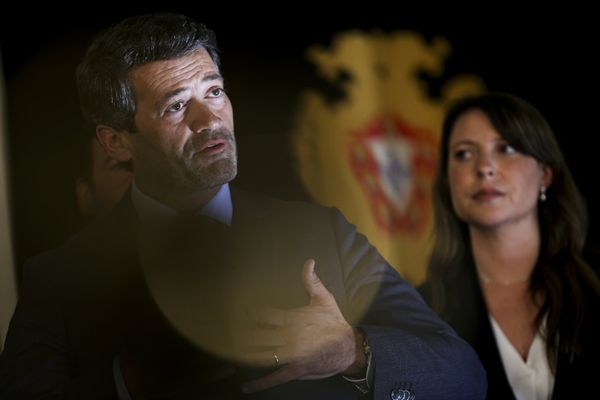
We produce drone shoots of luxury properties, and I would like to edit the raw footage and add graphics in-house. Please can you suggest which software is the easiest to use and most intuitive to create professional videos on both Windows and Mac? Paul Coleman
Bad news I’m afraid. No serious video editing program is intuitive or easy to use, and the more power you need, the harder things get.
Worse news still. There are dozens of options, but there is no “best”. Or at least, the best option depends on the video file formats you are trying to edit, the hardware you have available, what you need to do, how skilled you are, and your personal taste in software.
There is good news, though. Most video editors are free, or offer free trial periods, or have limited free versions with paid upgrades to the full versions. Software houses expect you to try a few programs before you find one that suits you.
Pick a simple editing operation and try it with the most likely options using the same 60-second video. If you can’t manage a simple operation in a reasonable time, you won’t have much luck with the complicated ones.
Training wheels
If you are new to editing video, start with a simple program to learn the basics. Microsoft’s Movie Maker is the obvious choice for Windows users, and Apple’s iMovie for Mac users. Both can produce videos you could put on YouTube. I wouldn’t recommend them for your website, which already includes some very professional videos, but the experience should help you to choose a more advanced program.
Movie Maker has not been updated since 2012 and is not officially supported on Windows 10, though you can still download and run it. The many alternatives include open source Avidemux and the VSDC Free Video Editor. I think VSDC’s interface is more attractive, but Avidemux has a better user guide. VSDC pushes its paid-for ($29.99 lifetime) upgrade, but you can actually use it – look for the “Continue” button.
You could also try Wondershare’s Filmora (Mac and Windows), which has an “easy mode”, and/or the cloud-based WeVideo. Both have the same drawback: the free versions watermark your videos. However, both are cheap if they do what you need. Filmora costs $49.99 for a lifetime of personal use or $99.98 for business use. Unlimited WeVideo costs $69 per year.
Another easy alternative is GoPro Studio. This is aimed at GoPro owners who are new to editing videos, but it’s free to everyone. If you are not using a GoPro camera, you may have to convert your video files to a compatible mp4 format. If this fails, GoPro has a help page: Video Fails to Import into GoPro Studio.
Advanced editing
The premier PC video editing software is Adobe Premier Pro, which runs on both Macs and Windows PCs. This is the best choice for most professional purposes. It has the most hardware and software support, and the most official and unofficial help in the form of tutorial videos, books and online articles. It’s the editor most professionals know, so you can always hire someone for a difficult project, or pass your unfinished in-house project to an outside studio.
You can buy Adobe Premier Pro as a standalone program or rent it as part of Adobe’s Creative Suite. You may already use other CS programs such as Photoshop. Lightroom, Illustrator, InDesign, and Audition. It’s not cheap, but professional tools rarely are.
Apple’s Final Cut Pro is an alternative for Mac users, and it’s the best choice for home/small business users who already know iMovie. However, if you don’t have a high-end Mac, I’d be cautious about buying one to run it.
Final Cut Pro X upset a lot of professional video editors because Apple “consumerised” it and changed their workflows. Some were already abandoning Macs because of the lack of an easily upgradable tower system, which hasn’t been helped by Apple’s failure to upgrade the Mac Pro for three years. Professional video editors always want more speed, because time is money. They often want to upgrade their processors and graphics cards when new technologies arrive, and big PC towers enable that.
Of course, you don’t need either Adobe Premier Pro or Final Cut Pro X to edit drone footage. However, you will have to invest a lot of time to learn video editing, and if you’re doing it for professional purposes, you should consider using professional software.
Mid-range to pro
Many other video editing programs can produce professional results, but there is no consensus about which is best.
The main contenders include Adobe Premiere Elements, Sony Vegas Pro and Vegas Movie Studio, Cyberlink’s new PowerDirector 15, Corel Video Studio, Magix Movie Edit Pro, Editshare’s Lightworks, and Blackmagic’s DaVinci Resolve. Many programs come in several versions to cover the range from beginners to advanced users.
Adobe Premiere Elements 16 has only just come out, and would be a good choice if you think you might move to Premier Pro later. At the time of writing, it hasn’t reached Amazon.co.uk, but you could buy it from Adobe or pick up an earlier version at a lower price.
I have previously recommended Sony Vegas Movie Studio for its power and ease of use. However, in May, Sony sold most of its creative products to Magix, including the six programs in the Vegas range and loads of audio and music software. The future is unpredictable, but Vegas Movie Studio 13 Platinum still looks a reasonable program for a beginner, with the Vegas Pro range as an upgrade.
Corel Video Studio, Cyberlink PowerDirector, Magix Movie Edit Pro and other video editors also have their fans. I suspect most users are amateurs, but they should all be able to do what you need.
Finally, both Lightworks and DaVinci Resolve are powerful professional programs with free versions, but I wouldn’t recommend either to beginners. The free Lightworks only works for videos up to 720p, but there’s a Linux version, so it appeals to people who can’t run Adobe or Apple software. DaVinci Resolve’s highlight feature is colour correction. In both cases, I’d suggest watching some introductory videos (Lightworks, Resolve) and video tutorials before downloading them.
Keep it simple
I’ve never edited any drone footage, but I am sure that there are plenty of tips and tricks in the forums devoted to drone photography. There are also companies that specialise in this area, such as Hexii Aerial Imaging (which says it uses Adobe Premier and After Effects, plus DaVinci Resolve for grading).
I suggest that you keep things as simple as possible, rather than trying to compete with Hexii or Digital Snowball. All the best video editing is done in the mind, by choosing the best clips and putting them in the most compelling order. If you can nail that, nobody is going to miss the fancy editing tricks.
Have you got another question for Jack? Email it to Ask.Jack@theguardian.com







